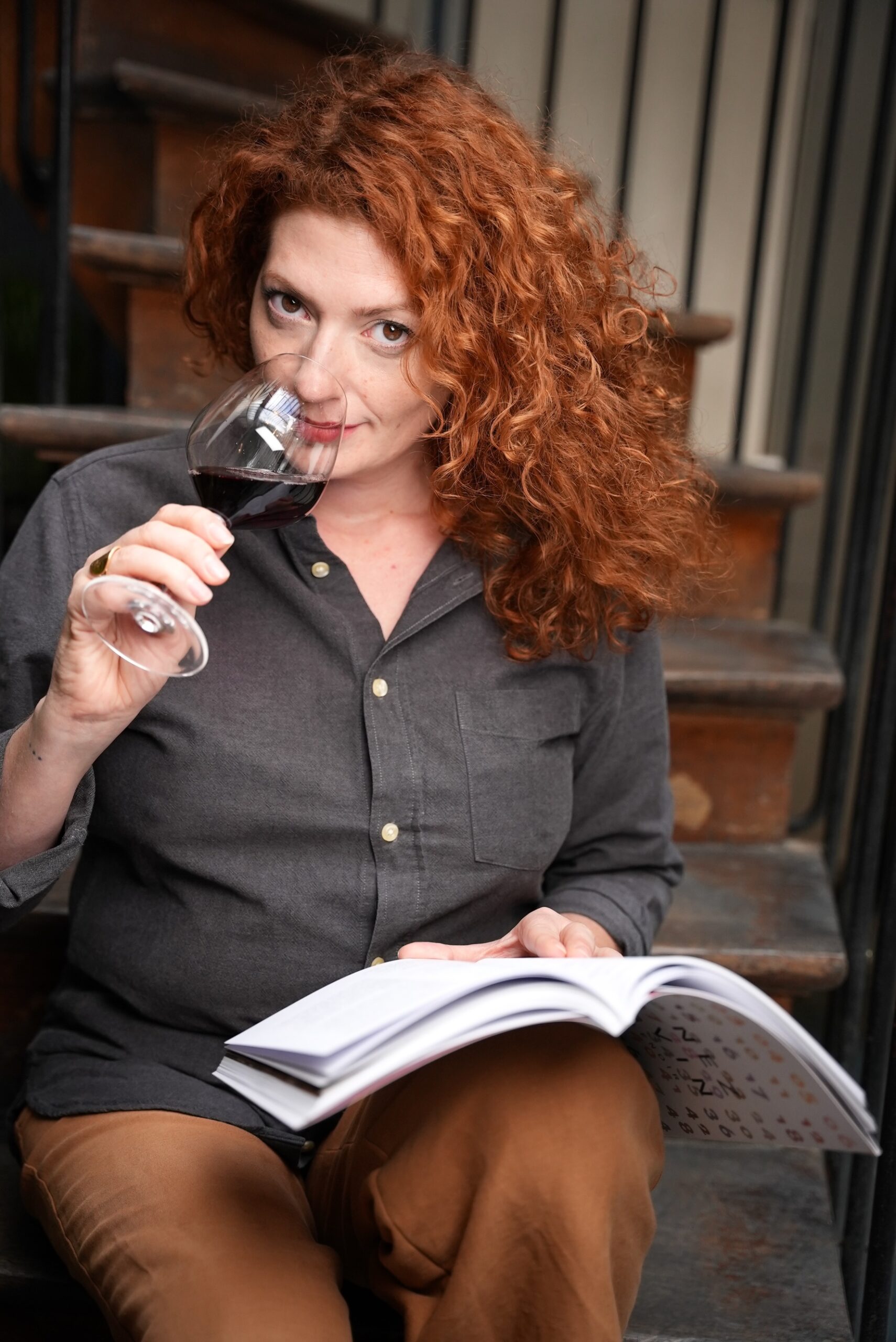Since 2014, she has made a name for herself at Éditions Jean Lenoir. Created by her father, around the famous book-object that allows you to understand wines by smell and better analyse their tasting. Here’s a look back at this amazing saga…
How did Jean Lenoir go from deputy director of the Maison de la Culture in Chalon-sur-Saône to wine?
Through art. The late 1970s marked the beginning of alternative cultural movements. Everything could be art: painting, sculpture, photography, of course, but also happenings and, why not, gastronomy. Together with artists such as Daniel Spoerri and Henri Cueco, my father created the Eat Art festival. Burgundy, a land of aromas and flavours, lent itself well to the idea. And that’s how he initiated wine-tasting cycles at the Maison de la Culture. Keen to improve his skills, my father went to Beaune to take classes with Max Léglise. The oenologist and researcher, who was to become one of the founding fathers of sensory analysis, had a message that spoke to him: wine is a medium open to everyone. Everyone is capable of appreciating it, as long as they get rid of an abstruse vocabulary and take an interest in… smells.
Daniel Spoerri, Henri Cueco, Max Léglise…: so it’s also a question of encounters?
Of course it was! Others followed, just as decisive. Starting with Olivier Baussan. He and my father hit it off immediately. The creator of L’Occitane opened the doors of his suppliers in Grasse to him. His first case of 120 bottles of essential oils was ready. My mother, an artist among other things, added watercolours illustrating the aromas in question. Armed with this new communication tool, my father continued to give conferences, with great success. So much so, in fact, that he carried out an audit among the participants: would you be prepared to buy a medium like the one I use? 1,000 promises of purchase were sent to him. In 1981, Le Nez de Vin, an encyclopaedic book containing 54 aromas, was launched, followed shortly afterwards by the creation of Éditions Jean Lenoir.
Right from the start, everything is already made in France?
Yes, with the exception of the bottles made in Italy. Nothing has changed since then. Le Nez du Vin brings together artisans, most of them local. Men and women who are passionate and knowledgeable. That was an essential point for my father.
How did you get involved in this adventure?
As an actress and radio journalist, I wasn’t heading in that direction at all. Until my father fell seriously ill. In 2013, at the end of my intermittent leave, I decided to look after him. We got closer and he asked me to join Éditions Jean Lenoir. Rather resistant to this easy solution, to this nepotism, I finally accepted a 6-month fixed-term contract as a sales assistant, convinced that I wouldn’t last long. At the time, I didn’t anticipate my perfect knowledge of Le Nez du Vin, created by my parents and of which I was the first beta tester, or the usefulness of my acting background. But there was still a feeling of imposture and illegitimacy. So I studied hard, while continuing my work with Éditions Jean Lenoir. I obtained the WSET 2, then 3, the diploma from the Institute of Brewing & Distilling in London, I became a sensory analysis teacher in coffee, I took evening classes in chemistry at the CNAM to perfect my knowledge of flavours…, before finally being appointed director of the Flavour Division and head of communications at Éditions Jean Lenoir.
What does that involve?
I’m pretty much on all fronts. In broad terms, it’s a question of ensuring the quality of the aromas, and therefore working with the flavourists on the formulations: « that vanilla is too chemical », « that one is too expressive »… In order to make the link, as accurately as possible, between the tasting of the wines and the pure aroma. And then, on a day-to-day basis, I make sure that what I say is accessible to everyone, both internally and externally. This was one of my father’s hobbyhorses. I don’t look down on people just because I’m considered to know something, but at the same time I pass on useful technical information. « This green pepper note comes from 2-isobutyl-methoxypyrazine. It’s a barbaric name with many formulas, of course… It’s often found in Cabernet Sauvignon harvested before ripeness, because… ». In short, it’s all about making the data speak for itself, even the most complex or off-putting data.
What new projects are you working on at the moment?
We’ve been working for a long time on a more extensive version of the Nez du Café. It currently has ‘only’ 36 flavours, although it has become an essential tool in Asia and the United States, so much so that it is required for the Q Grader tests, the benchmark diploma for assessing the quality of speciality coffees. Faced with the explosion of this market, the Coffee Quality Institute, which issues the diploma, asked us to add to our object book. In addition, we are producing a brand new boxed set, L’École du Nez, on the re-education of the olfactory system. Our first step away from tasting. It involves proposing a whole protocol on pure olfaction: how to put a word to an aroma that you have already identified.
And what about Burgundy wines?
If my father loved Morey-Saint-Denis, I could sell my kidney for Puligny-Montrachet. Nothing touches me more than the smoky notes of Burgundy whites. It’s just crazy. Every time, I can’t believe the richness of their aromas…

